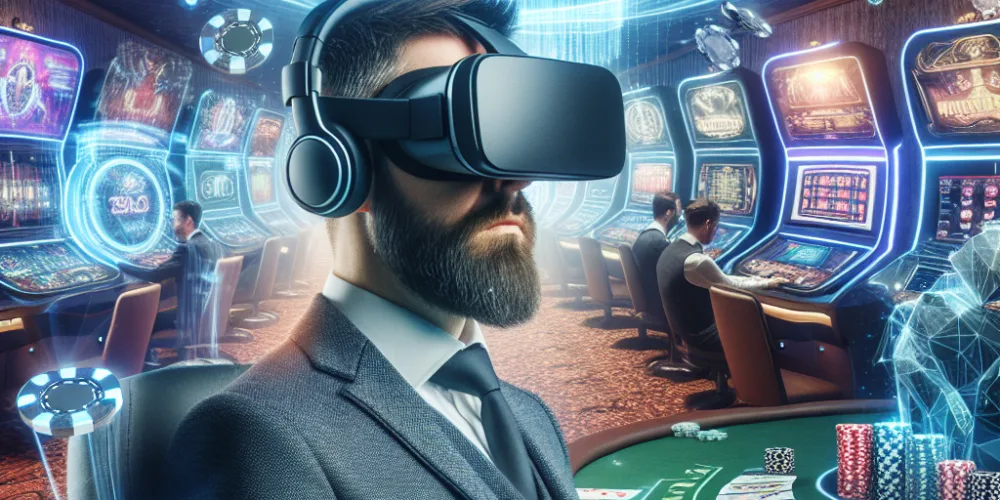The gaming industry is constantly evolving, with technological advancements frequently elevating the way we perceive and interact with virtual environments. One of the most groundbreaking developments in recent years has been the rise of virtual reality (VR) casinos. This merging of cutting-edge VR technology with traditional gambling experiences promises a revolution in the casino and gaming sector, offering an immersive experience that closely mimics the thrill of being in a physical casino.
Virtual reality technology uses headsets and sometimes additional gear to create a fully immersive, three-dimensional digital environment. Players can interact with this environment in ways that are exponentially more engaging than traditional online gambling platforms. With VR casinos, players can stroll along the casino floor, interact with other players and live dealers, sit at a slot machine or gaming table, and observe their surroundings in real-time, all from the comfort of their homes.
Evolution of VR Casinos
The concept of VR casinos started as a niche experiment but has gained significant momentum due to improvements in VR technology and more widespread consumer access to VR headsets, such as the Oculus Rift, HTC Vive, and Sony PlayStation VR. Initially, the experiences offered were somewhat rudimentary, focusing mainly on the novelty of VR rather than delivering a comprehensive casino experience. However, as technology has advanced, so too has the depth and quality of these virtual experiences.
Major casino game developers like Microgaming and NetEnt have recognized the potential of VR and have begun adapting some of their most popular games to include VR versions. These games not only replicate the physical experience of games like slots, poker, and blackjack but also add unique elements that are only possible in a virtual environment, such as themed rooms and interactive game features that respond to player actions in real-time.
The Market’s Response and Potential
Consumer response to VR casinos has been predominantly positive, with many players appreciating the enhanced immersion and interactivity. It’s not just individual players who are taking notice; major casinos are also exploring VR as a way to offer new forms of entertainment and attract a younger demographic that might not be interested in traditional forms of gambling.
The potential for growth in the VR casino market is immense. According to a report by Grand View Research, the global virtual reality market size was valued at approximately $15.81 billion in 2020 and is expected to grow at a compound annual growth rate of 18.0% from 2021 to 2028. This anticipated growth suggests a promising future for VR applications in gambling, an area still in its infancy but rapidly gaining traction.
Challenges and Future Directions
Despite its potential, the widespread adoption of VR casinos faces several challenges. The most significant is the cost and accessibility of VR technology. High-quality VR headsets are still relatively expensive and require powerful hardware to run, which can be a barrier for widespread consumer adoption. Additionally, there are concerns about the regulation of VR gambling, as the immersive nature of the environment may increase the risks associated with gambling addiction.
Looking ahead, the future of VR casinos will likely focus on overcoming these barriers and enhancing the user experience. This could include the integration of more advanced social features, allowing for increased interaction among players, or the incorporation of AI to create more responsive and adaptive gaming environments. As both hardware technology and software development continue to advance, the experiences offered by VR casinos will only become more immersive and realistic.
Conclusion
The rise of virtual reality casinos marks a notable shift in the gaming and gambling industries, blurring the lines between the physical and the digital. As this technology continues to develop and become more accessible, it promises not only to transform how we engage with virtual gaming environments but also to reshape the entire landscape of the gambling industry. For both players and casino operators, the revolution has just begun.

Karine Gomez is an enthusiastic writer and avid gamer with a particular love for PlayStation and casino gaming. Her deep knowledge of gaming trends and casino dynamics makes her articles both informative and engaging. Karine’s passion for PlayStation games and her firsthand experience with casino play shine through in her writing, offering readers authentic insights and valuable tips.

